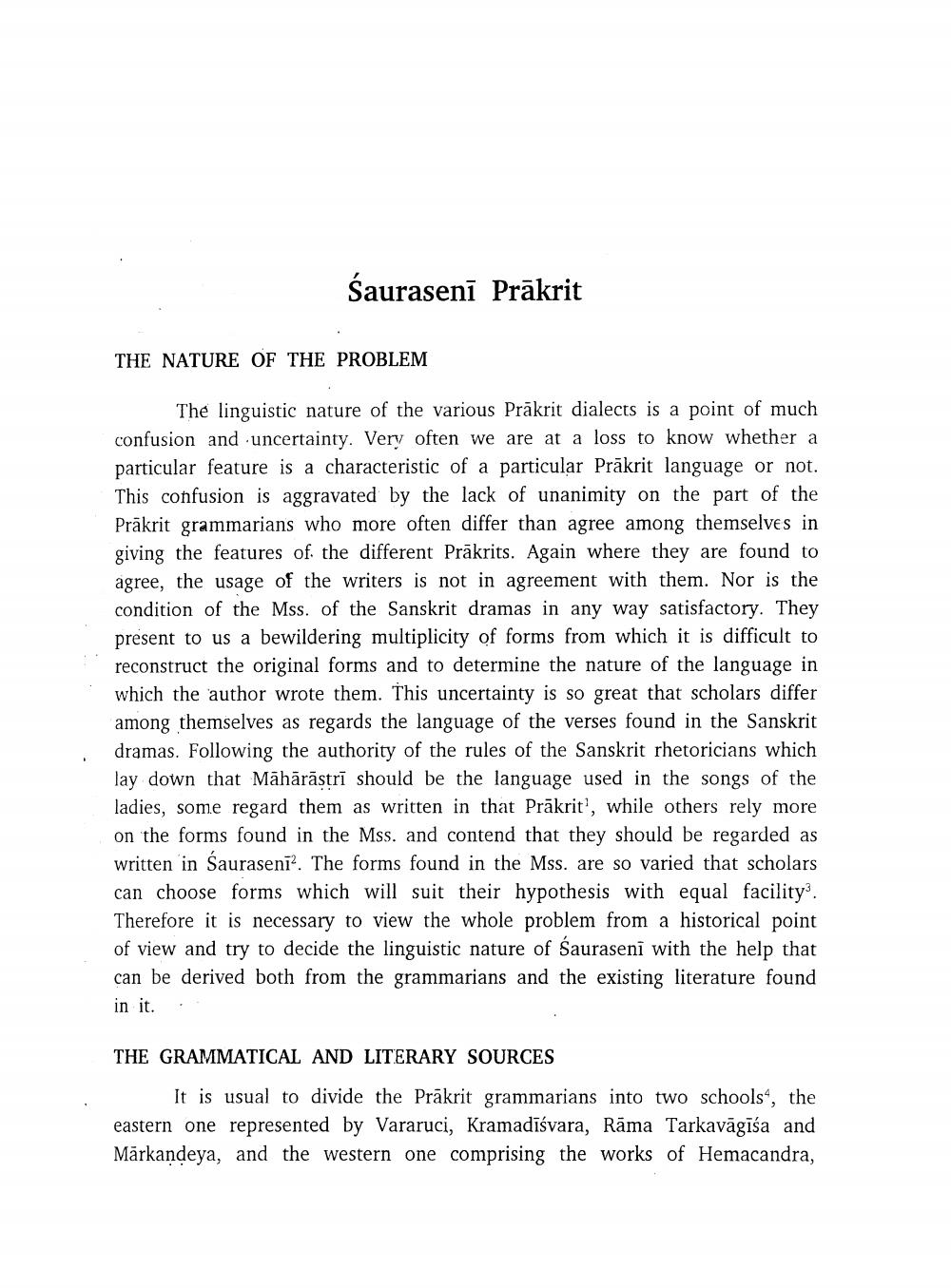________________
Śaurasenī Prākrit
THE NATURE OF THE PROBLEM
The linguistic nature of the various Prākrit dialects is a point of much confusion and uncertainty. Very often we are at a loss to know whether a particular feature is a characteristic of a particular Prākrit language or not. This confusion is aggravated by the lack of unanimity on the part of the Prākrit grammarians who more often differ than agree among themselves in giving the features of the different Prakrits. Again where they are found to agree, the usage of the writers is not in agreement with them. Nor is the condition of the Mss. of the Sanskrit dramas in any way satisfactory. They present to us a bewildering multiplicity of forms from which it is difficult to reconstruct the original forms and to determine the nature of the language in which the author wrote them. This uncertainty is so great that scholars differ among themselves as regards the language of the verses found in the Sanskrit dramas. Following the authority of the rules of the Sanskrit rhetoricians which lay down that Māhārāstrī should be the language used in the songs of the ladies, some regard them as written in that Prākrit', while others rely more on the forms found in the Mss. and contend that they should be regarded as written in Saurasenī?. The forms found in the Mss. are so varied that scholars can choose forms which will suit their hypothesis with equal facility. Therefore it is necessary to view the whole problem from a historical point of view and try to decide the linguistic nature of Saurasenī with the help that can be derived both from the grammarians and the existing literature found in it.
THE GRAMMATICAL AND LITERARY SOURCES
It is usual to divide the Prākrit grammarians into two schools, the eastern one represented by Vararuci, Kramadīśvara, Rāma Tarkavāgisa and Mārkandeya, and the western one comprising the works of Hemacandra,




